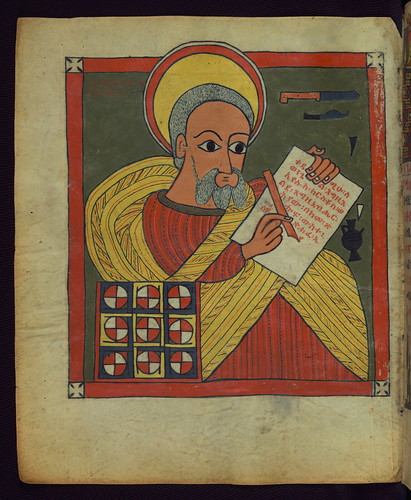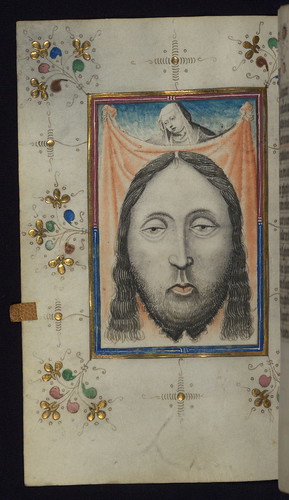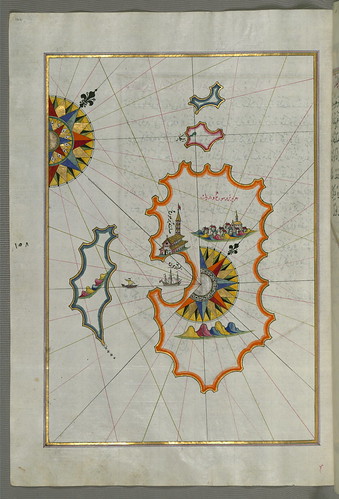
Illuminated Manuscript, Reichenau Gospels, Evangelist portrait of Matthew, Walters Art Museum Ms. W.7, fol. 15v, originally uploaded by Walters Art Museum Illuminated Manuscripts.
This Gospel book is believed to come from the Abbey of St. Peters in Reichenau, on the basis of its script, its illumination, and the fact that it contains a dedication image, in which a book is being handed to St Peter. The decoration of the manuscript places it in the so-called Luithar school of Reichenau. Its ornamental motifs compare very closely with those in Munich, Clm. 4453, and its palette is nearly identical to that in the Reichenau manuscripts of the Bamberg Cathedral Treasury. Gold uncials begin each paragraph as well as the introductory words of each chapter, and are a distinct mark of Reichenau manufacture. Its text is written in Caroline minuscule, and it is paleographically related to Bamberg Mss, Bibl. 76 and 22, and also Munich Clm. 4454. As a whole, it is an excellent example of Ottonian book illumination.




